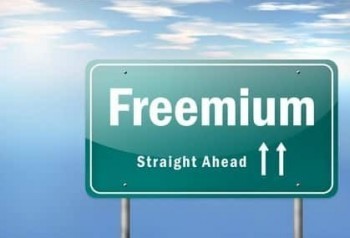 Freemium subscription model under attack
Freemium subscription model under attack
Back in May of this year SlideShare stopped accepting any new “pro” accounts. For several years SlideShare has operated the “freemium” model of business – free users get a basic service whereas higher levels of capability have to be paid for in a premium service. You see this throughout the web; many services are completely free of charge, but if you want the extras you have to stump up some cash.
The fact that SlideShare – now owned by LinkedIn – stopped taking orders for its Pro account was curious. After all, LinkedIn itself has a successful freemium model with around 25% of the company’s revenues coming from people who upgrade from the free service to a premium account. So why did LinkedIn abandon the same business model on SlideShare?
All was revealed last week when they announced that almost all the “pro” features would now be available free of charge, including analytics, the possibility to make slide decks private and the ability to brand your SlideShare profiles. Previously you had to pay a fee to do all that; now it is going to be free.
So how can SlideShare afford to run? The answer is the site is now going to introduce advertising. Just when you thought everyone had realised the online advertising is increasingly annoying to users, a major firm like LinkedIn is upping the game.
Advertising only works when you are big
The problem for SlideShare is that it only has around 60m users, compared with the 300m over on LinkedIn. At LinkedIn about 30% of the revenues come from advertising – yet, just as on almost every other online advertising platform, most adverts do not get clicked on. In a world where pay-per-click advertising dominates, most of us ignore the adverts. But if you have 300m people who log into your site and if a mere 1% of them click on an advert, that’s still a hefty 3m people.
In order for SlideShare to make money from advertising it needs to grow its user base – 1% of 60m is only 600,000 clicks, which is tiny in comparison. But how can you grow your user base when the features you offer have to be paid for? Answer, says LinkedIn, is to make them free.
When you have a massive user base you can make some real money online. Facebook, for instance, has almost 1.5bn users and generates a whopping $6bn or so a year – which means each user is worth about one cent per day to the business. Most of those users ignore the adverts. Most of us get annoyed by them, but move on, realising they are the price we pay for using the service.
Expect even more online advertising
The trend is for big firms to adopt an advertising route. They have toyed with the freemium world, only to conclude that they can make more money by getting higher numbers of users and delivering just a small proportion of them to click on an advert. SoundCloud, for instance, also announced the other day that it will be introducing advertising to its audio system. Meanwhile, Facebook is coming up with more ways of injecting sponsored items in to your timeline and getting you to see more advertising.
It seems that big online firms have concluded that the freemium model has limitations. As a result, they are going to find ways of adding more and more advertising to our “user experience”. Which can only mean they can expect the click-through rate to drop, meaning they need more and more millions of users to deliver value to their advertisers.
What will happen when we all get thoroughly fed up with advertising and we rebel against these services? Well, then you can expect competitors to arise which do not carry advertising and which offer some services free with subscriptions for others. We will come full circle.

